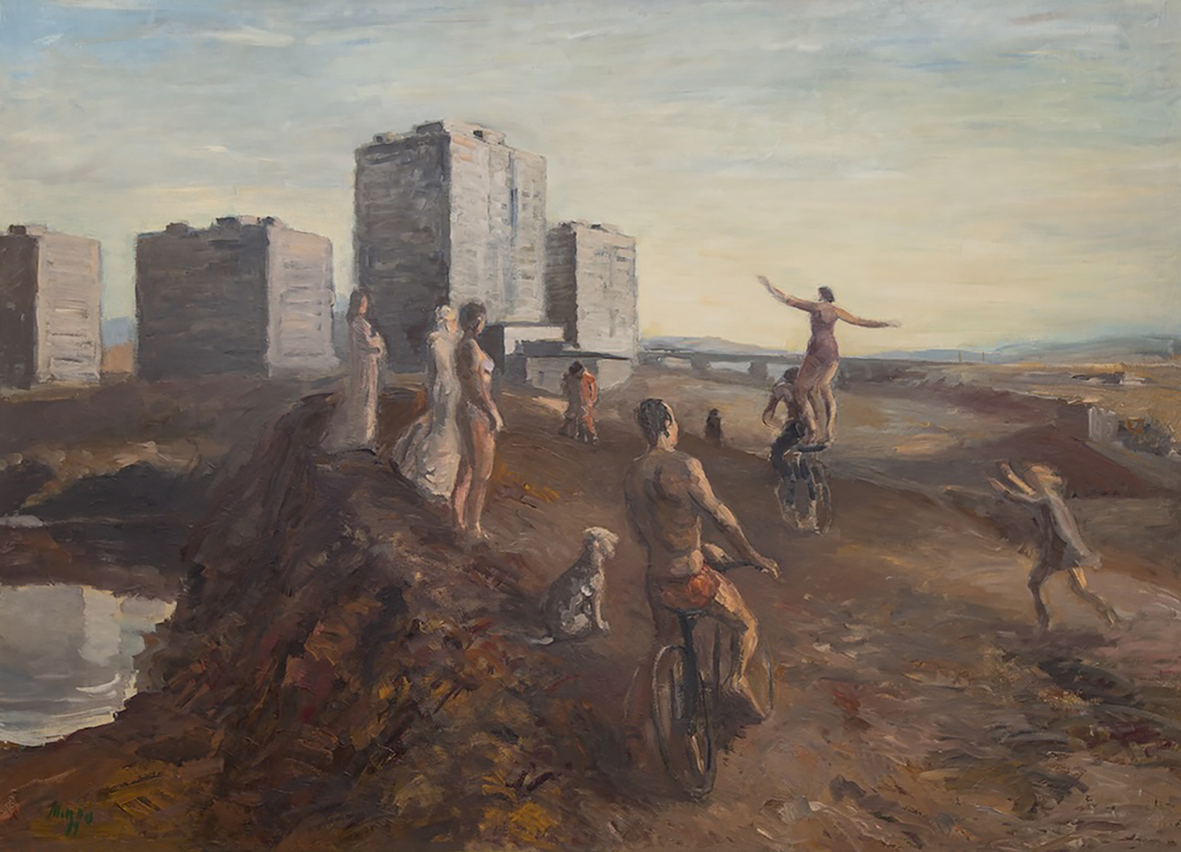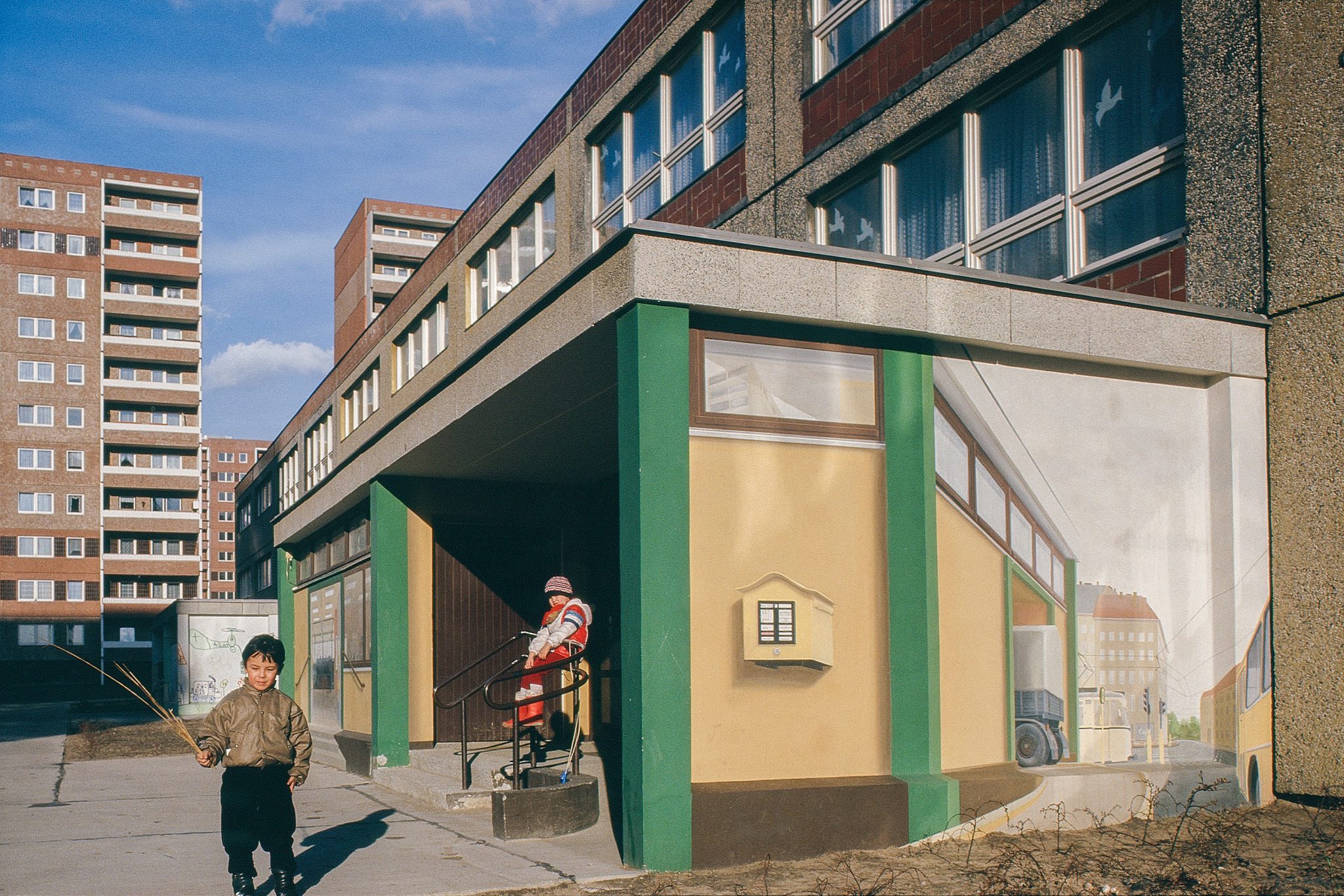It turns out: only so much
Plattenbau – literally ‘panel building’ – is a term synonymous with the mostly highrise pre-fabricated estates that were thrown up en masse across East Germany from the 1960s onwards as an efficient, inexpensive solution to housing and a planned collectivisation of the people. In 1990, the German Democratic Republic collapsed, and alongside it the ideological and economic systems underpinning the Plattenbau, but many buildings remain, often renovated or repurposed yet resonant of their past. As vessels for collective memory, projection and transformation, they are naturally interesting to artists. Wohnkomplex (Living Complex) leans into its title’s ambiguity, with some 50 artworks by 24 artists (nearly all of whom are from or lived in East Germany), dating from the 1970s to the present. Within the boundary of an almost exclusively white perspective – which I will return to – it presents a compellingly nuanced picture of life within the ‘complex’.

Wolfram Ebersbach’s 1974 oil painting Hausfassade captures expressions of individualism within the strict architecture; balconies host a tomato plant, parasols, TV antennae that might catch signals from the West, a figure smoking. Its dimensions (99 × 85 cm) and white frame imply observing through a window from an identical building opposite. Even constricted by this view, the blue sky reflected in the upper windows evokes an ambivalence verging on optimism. Starkly contradicting this vision are subversive works on paper by Ruth Wolf-Rehfeldt, who used the typewriter of her profession as an office manager to stamp out Kuben, Kästen, Käfige (Cubes, Boxes, Cages), as a 1979 work on paper is emphatically titled, that recalls the aesthetics of the Plattenbau and the administration behind it.
For an exhibition about such a seemingly banal form of architecture, there is an urgent, emotional charge in Sabine Moritz’s Lobeda (1991–94), detailed, childlike drawings from memory of the estate where she lived before emigrating to West Germany, and surreal encounters to be had in Peter Herrmann’s primitively painted Kühe vor dem neuen Tor (Cows in Front of the New Gate, 1979), which humorously drops a Plattenbau into a field of nonplussed cows – as the housing plan extended to agricultural communities – or Harald Metzkes’s Felliniesque oil on canvas, Aufbau von Marzahn (Building Marzahn, 1984), where an estate looms behind figures engaged in acrobatics.

Although the infamous ‘baseball bat years’ of racist violence that occurred during the 1990s after the GDR’s fall is exposed in Henrike Naumann’s Triangular Stories (Amnesia & Terror) (2012), an installation that posits hedonistic club culture and neo-Nazi terror as two paths of appeal to estate-dwelling teenagers, no works speak for the people on the receiving end of this violence or its historical intersections. (Nina Fischer and Maroan el Sani’s film Klub 2000 – rom, paris, marzahn, 1998, edges towards it, as two ravers scope out Marzahn to start a new venue and weigh up the proximity to skin-heads.) During the GDR era, for example, the egalitarian promise of the Plattenbau rarely extended to contract workers from abroad, often housed in segregated estates, subjected to curfews and family separation, and threatened with deportation in the case of pregnancy – a history recently examined by Vietnam-born Sung Tieu in her exhibition at Berlin’s Kunst-Werke. Today, Plattenbau estates are often cited as far-right strongholds, while housing immigrants unable to rent elsewhere by systematic racism. To leave this underexplored feels amiss. This survey successfully launches its subject into the artistic conversation, but we need a broader scope to tackle questions that the Plattenbau triggers about living together in Germany, in all its complexity.
Wohnkomplex: Art and Life in Plattenbau, Das Minsk, Potsdam, through 8 February.
From the October 2025 issue of ArtReview – get your copy.
